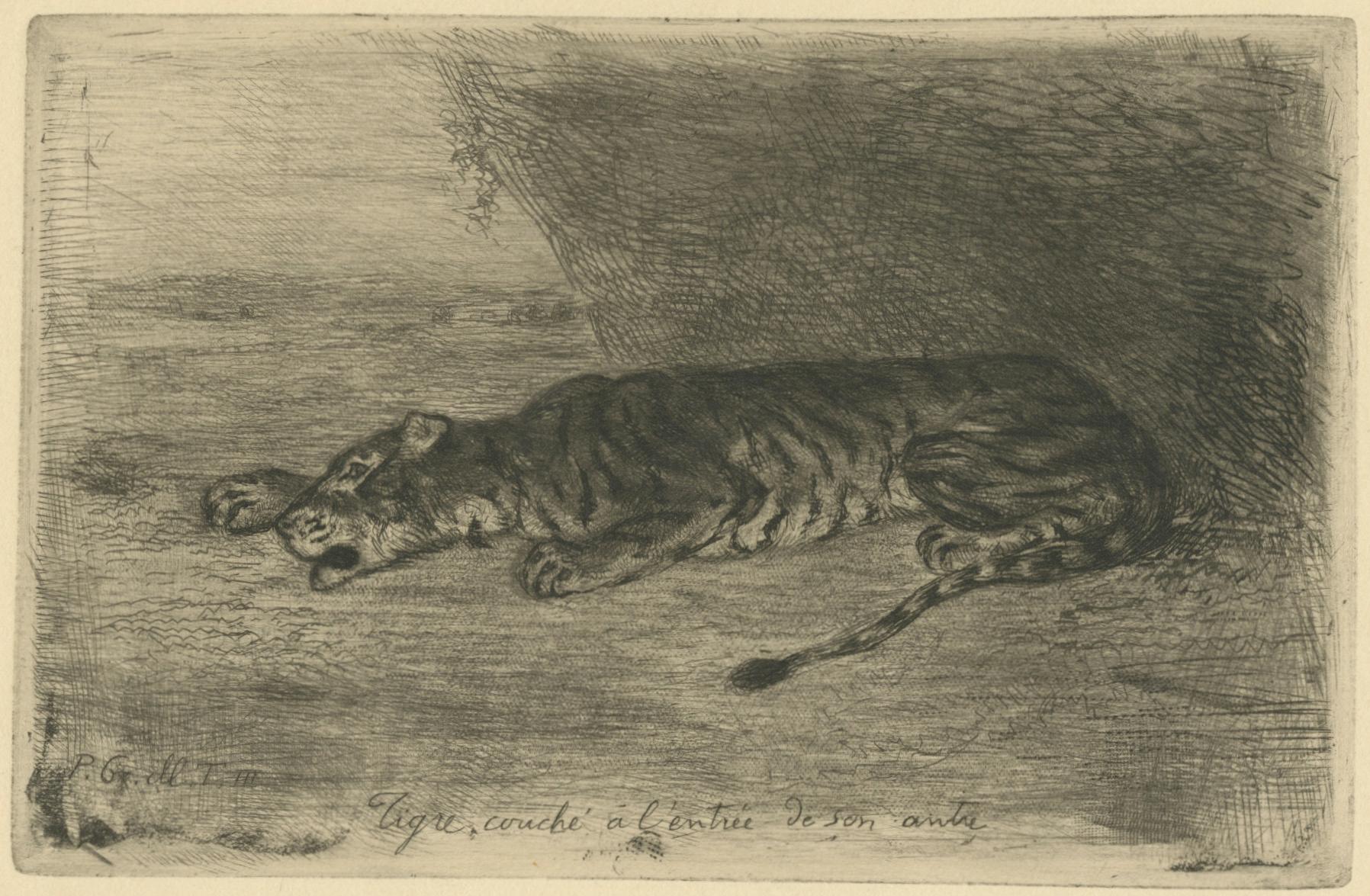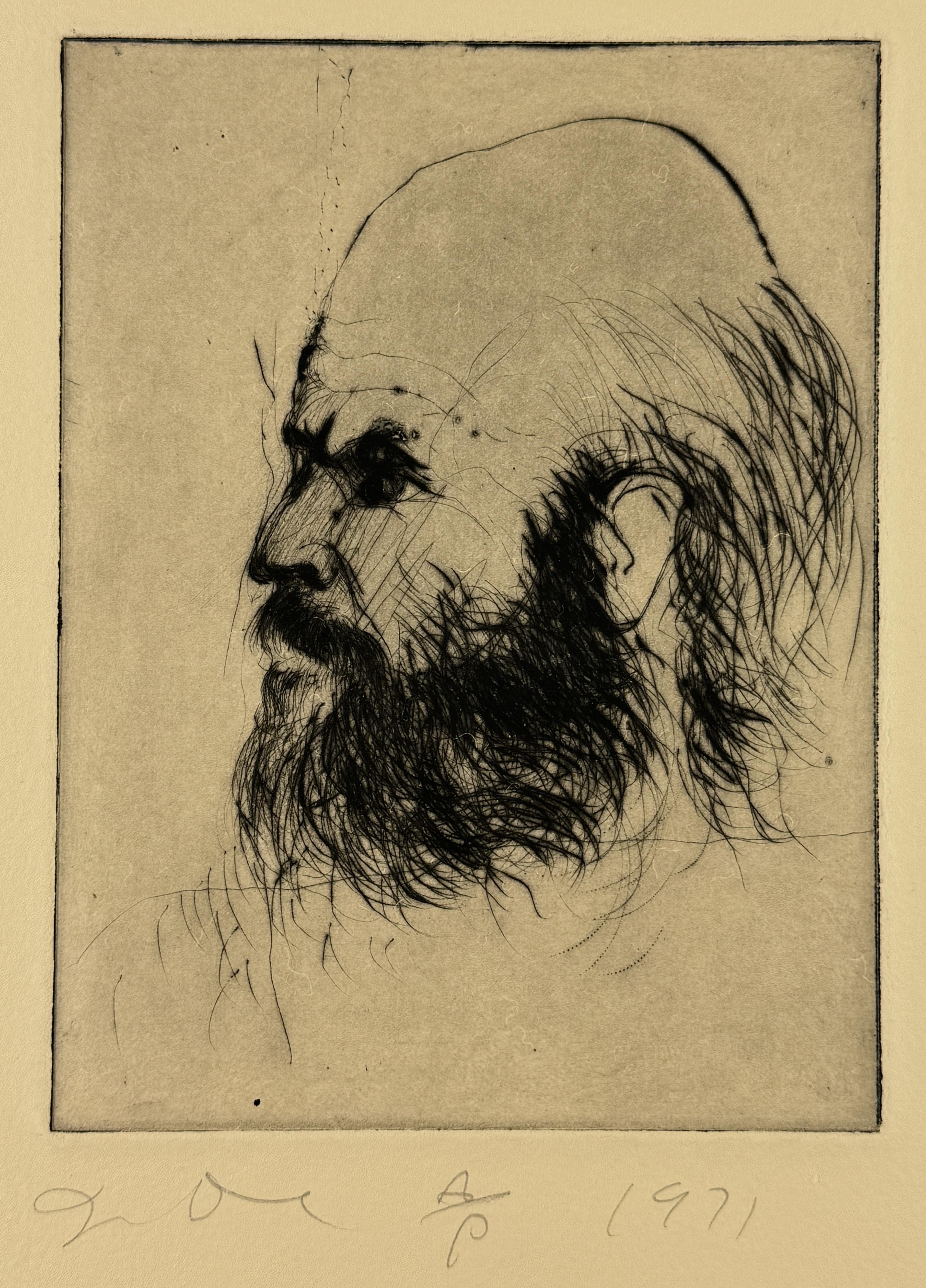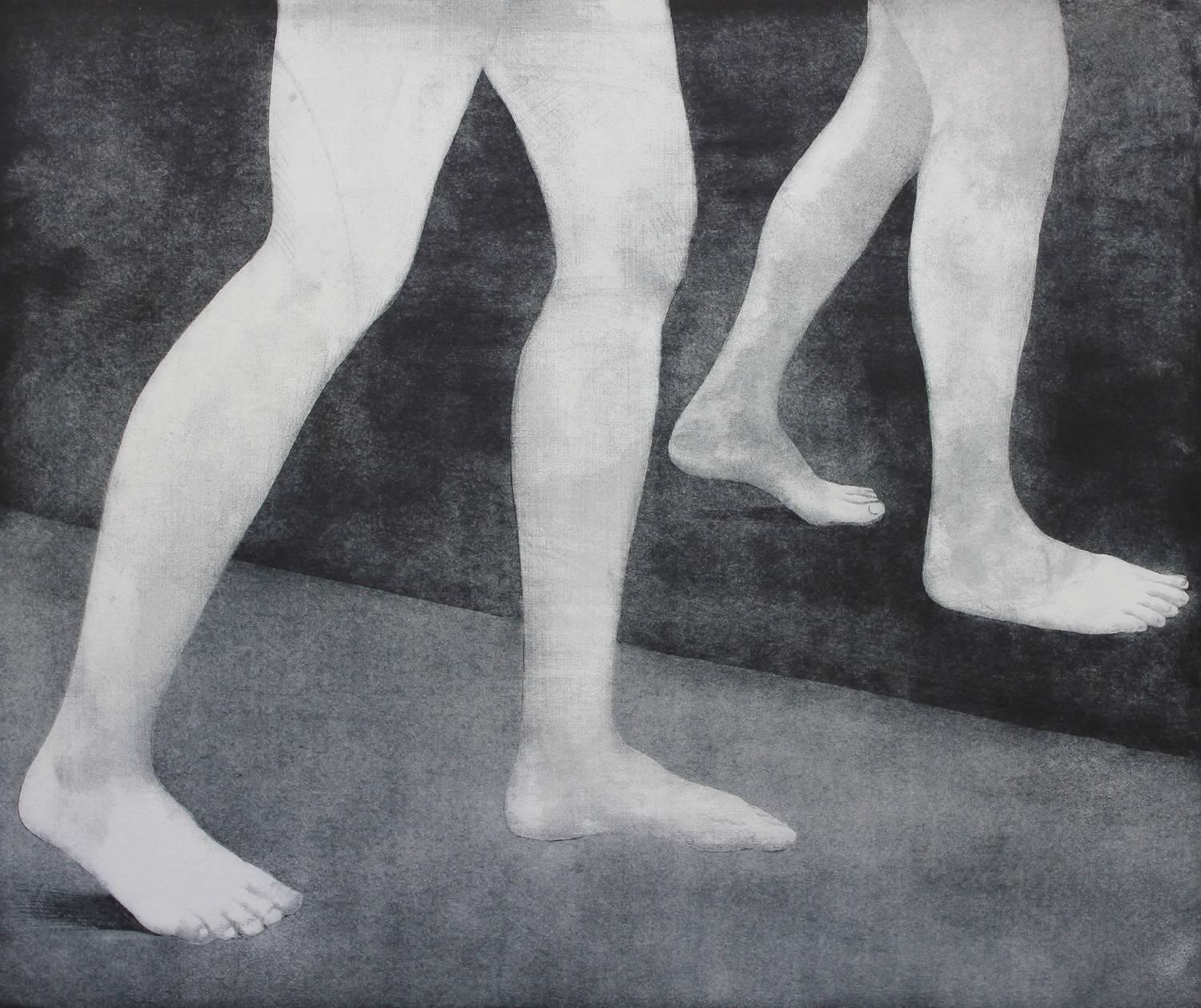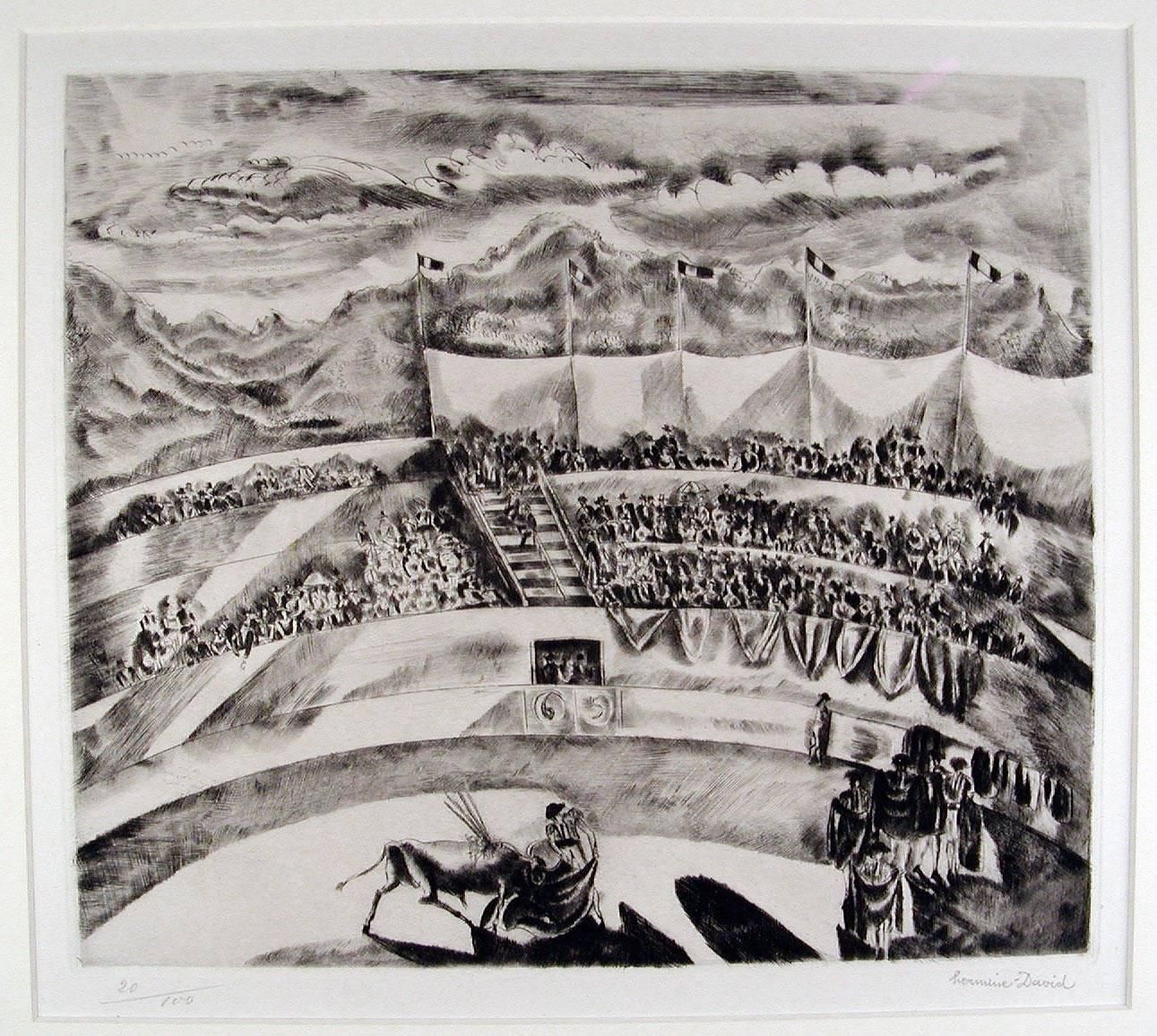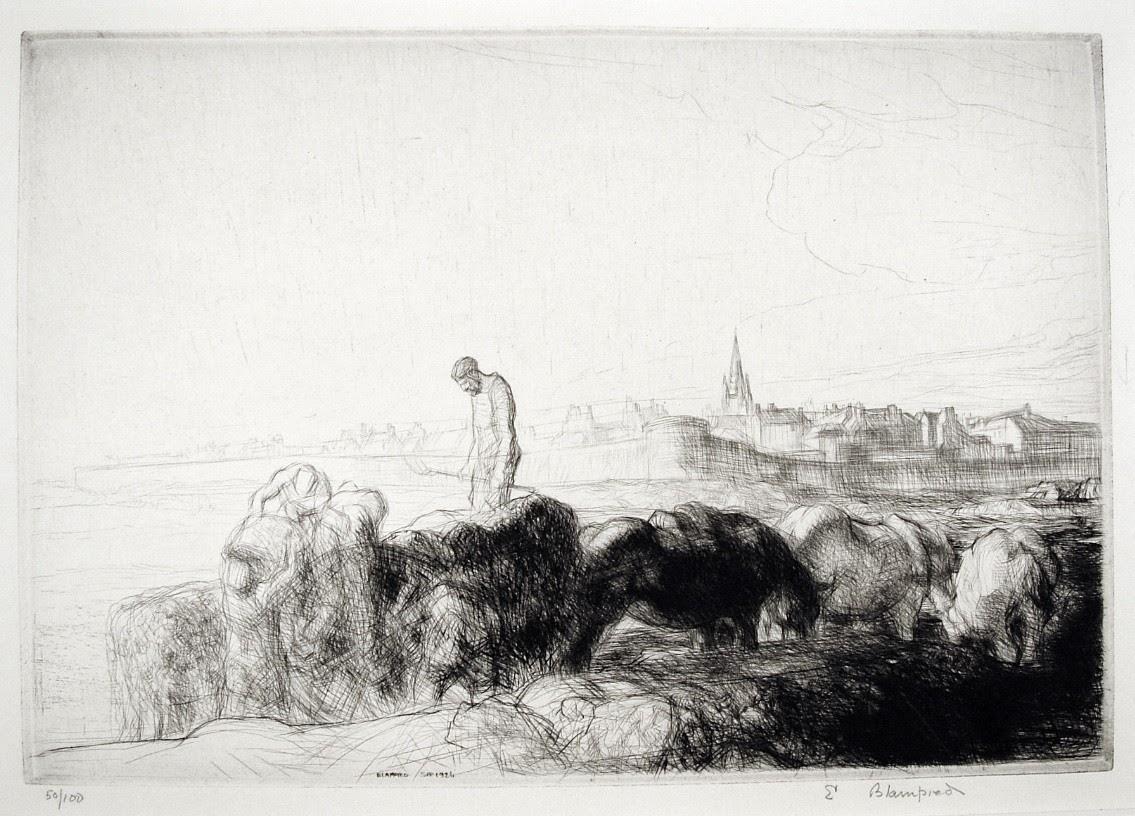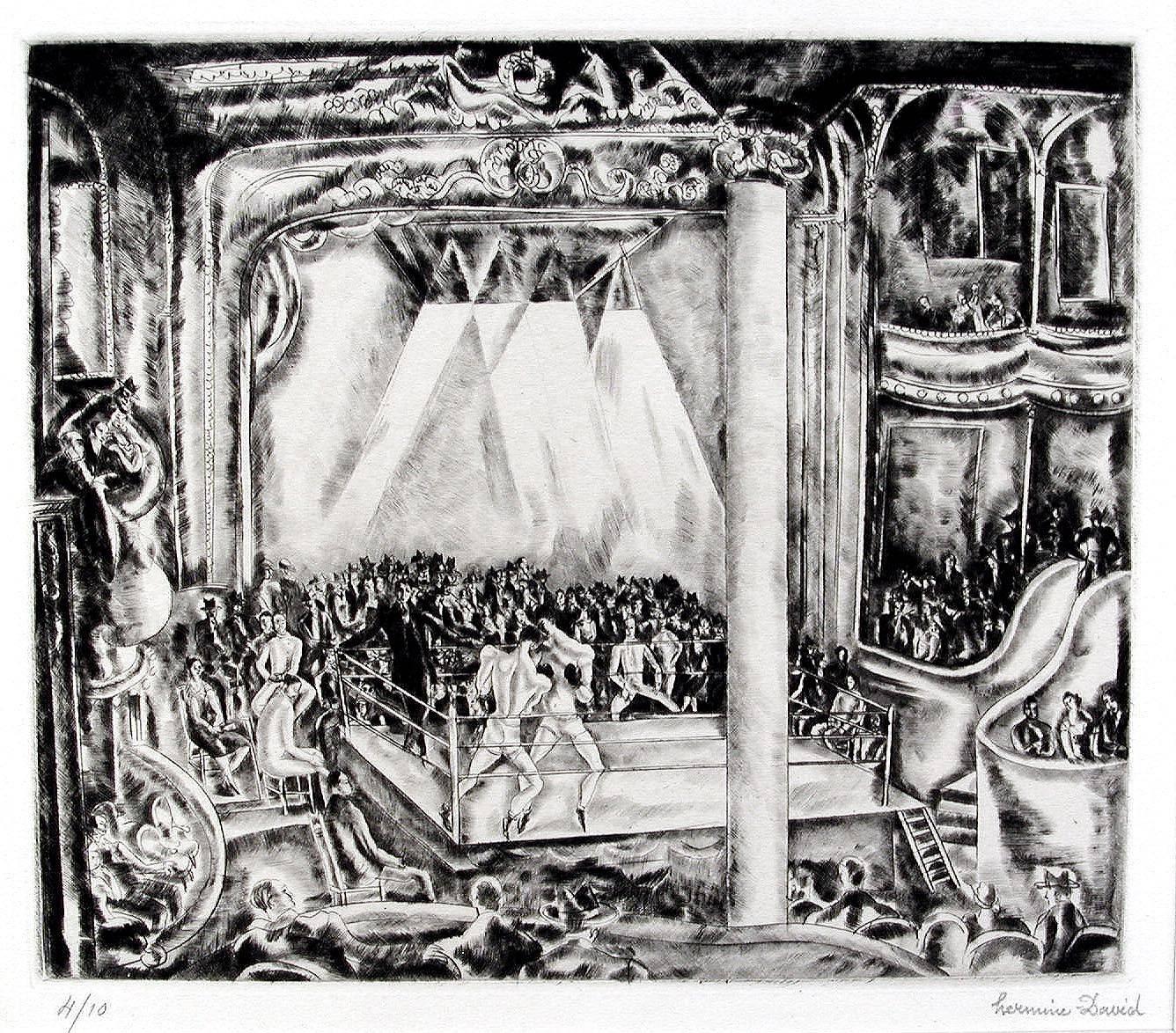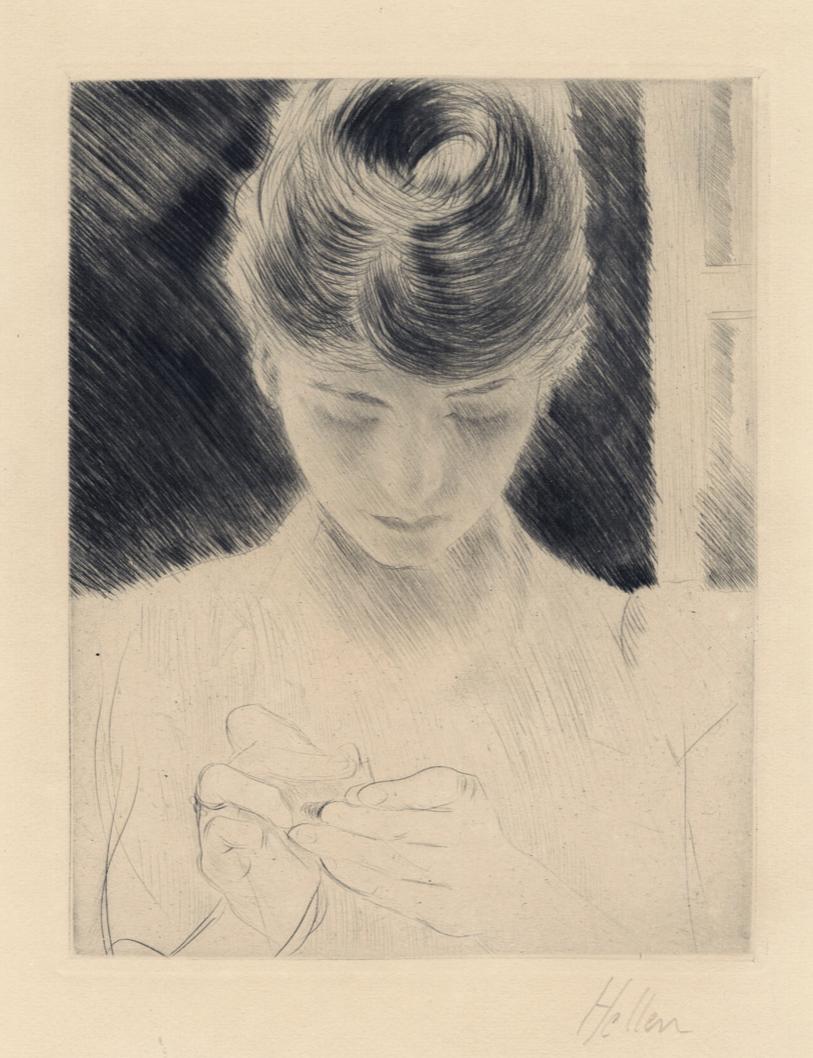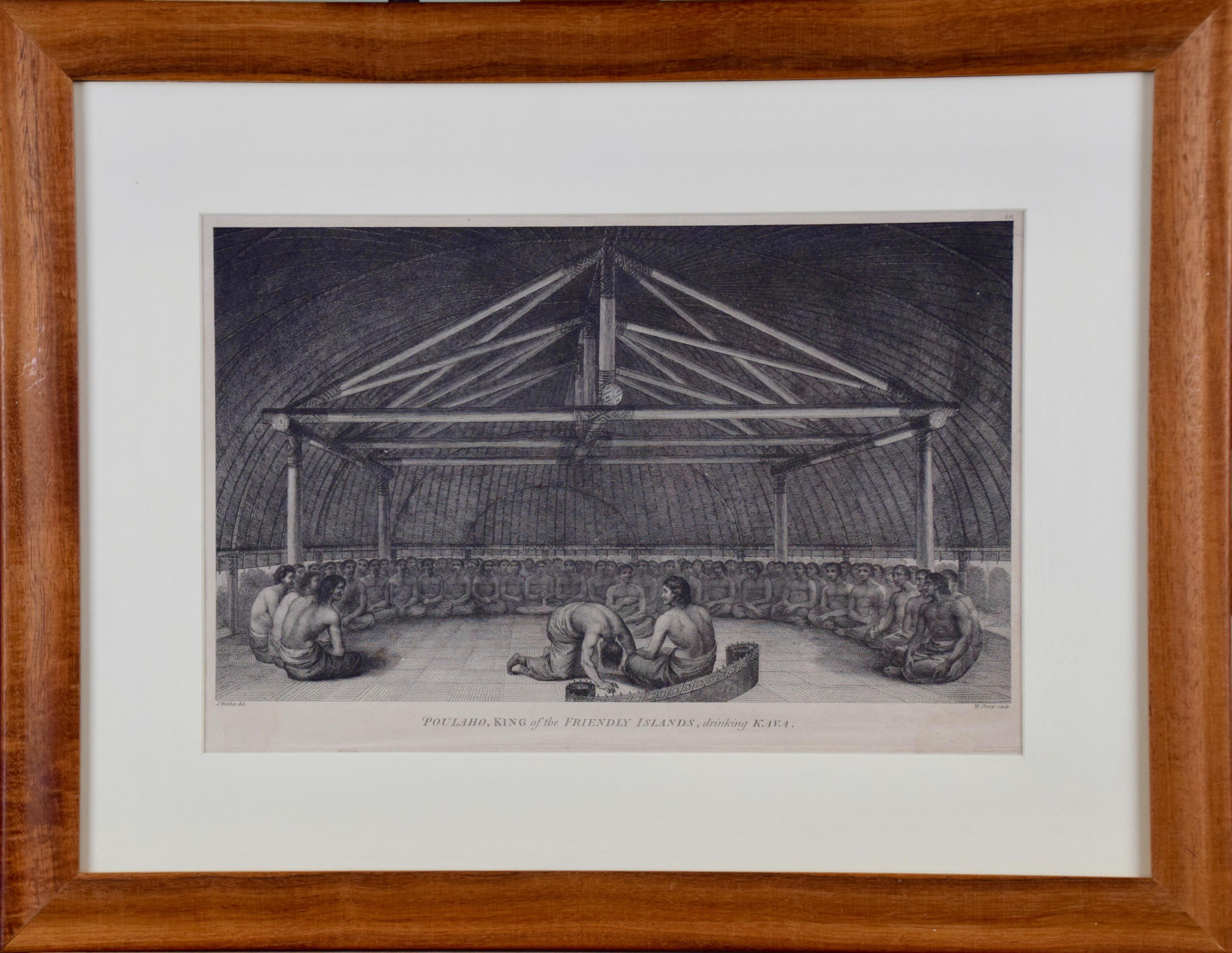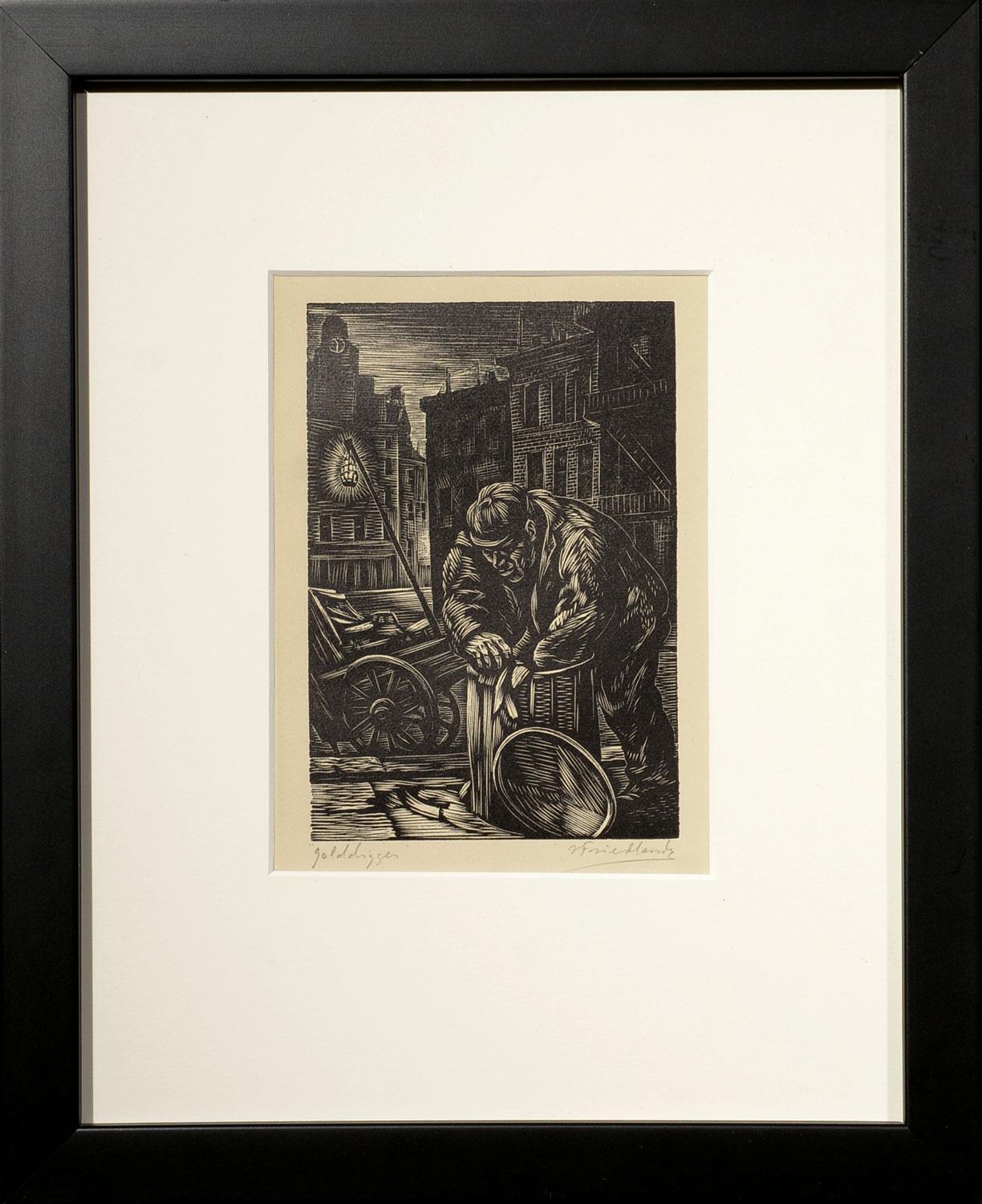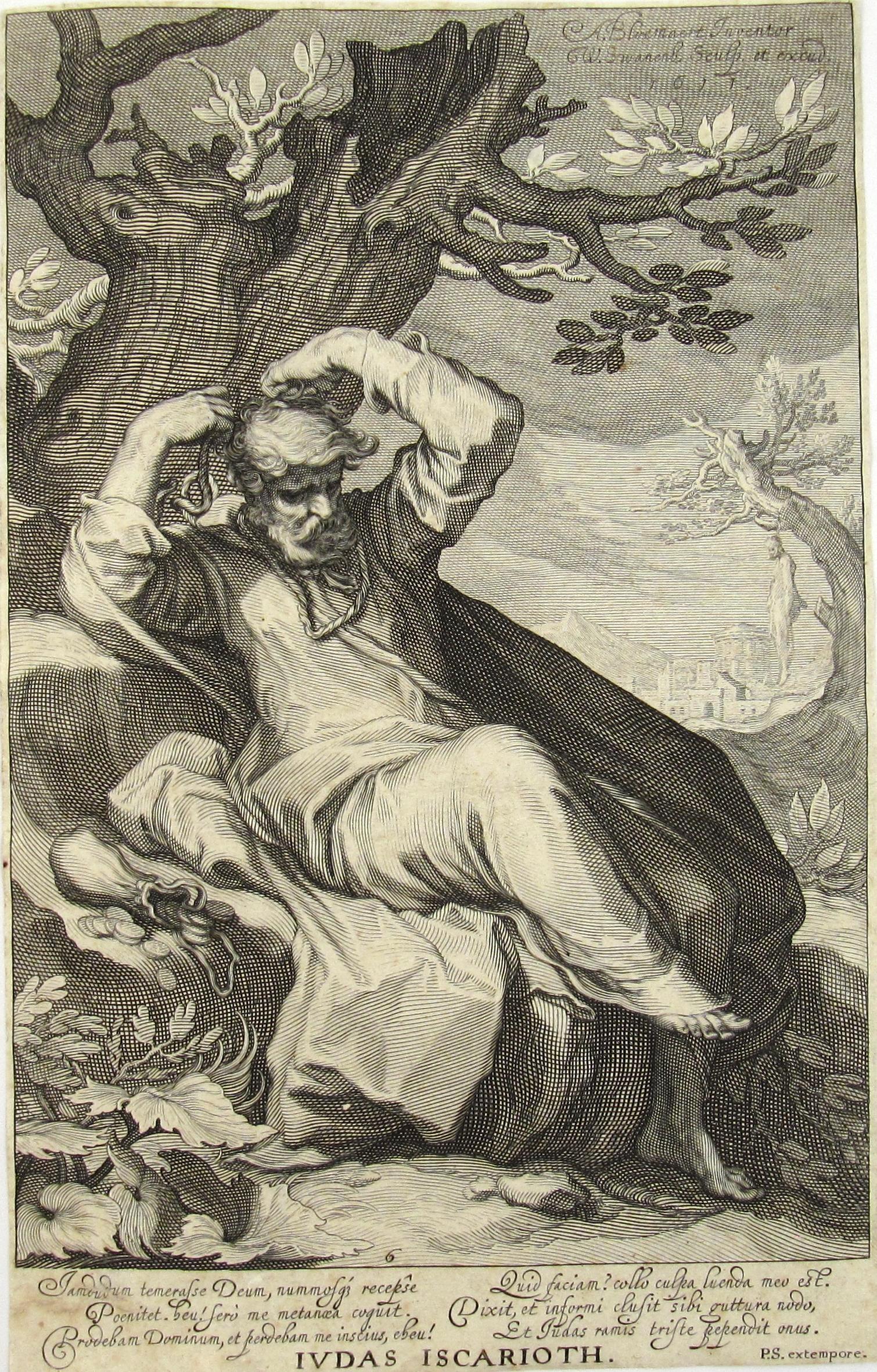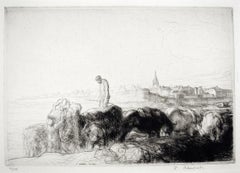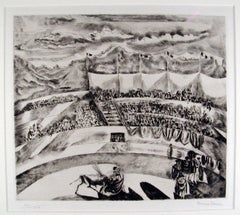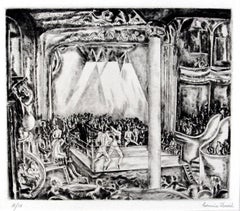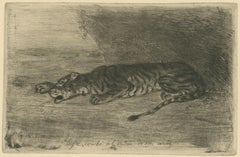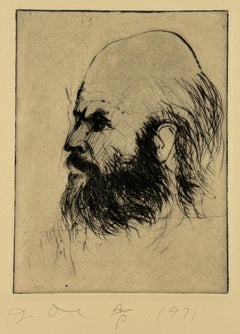Gigolette
View Similar Items
Want more images or videos?
Request additional images or videos from the seller
1 of 2
Edgar ChahineGigolette1924
1924
About the Item
- Creator:Edgar Chahine (1874 - 1947, French)
- Creation Year:1924
- Medium:
- Movement & Style:
- Period:
- Condition:
- Gallery Location:New York, NY
- Reference Number:1stDibs: LU51531564603
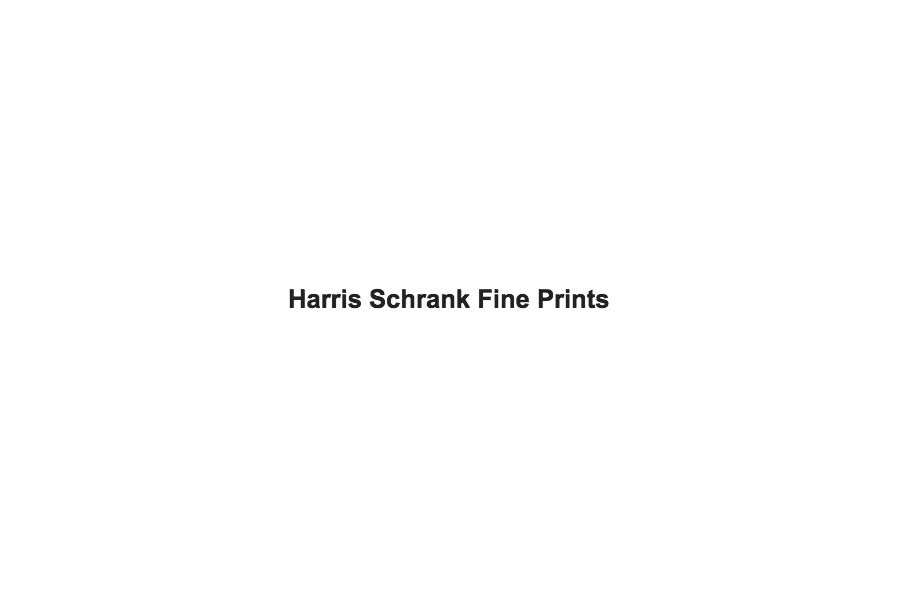
About the Seller
4.9
Recognized Seller
These prestigious sellers are industry leaders and represent the highest echelon for item quality and design.
Established in 2000
1stDibs seller since 2016
99 sales on 1stDibs
Typical response time: 3 hours
Associations
International Fine Print Dealers Association
More From This SellerView All
- Loading Vraic St. MaloBy Edmund BlampiedLocated in New York, NYEdmund Blampied (1886-1966), Loading Vraic St. Malo, drypoint, c. 1926, signed in pencil lower right margin and numbered 50/100 lower left. Reference: Appleby 122. In very good condition, with margins, on an ivory laid paper; 6 7/8 x 10, the sheet 10 x 15 1/2 inches, archival mounting. A fine impression, with substantial burr from the drypoint work. Provenance: Collection: Albert M...Category
1920s Realist Figurative Prints
MaterialsDrypoint
- La CorridaBy Hermine DavidLocated in New York, NYHermine David (1886-1970) La Corrida, etching and drypoint, 1929, signed and numbered (20/100) in pencil (Inventaire Bibliotheque Nationale de France #22)....Category
1920s Realist Figurative Prints
MaterialsDrypoint, Etching
- Boxing MatchBy Hermine DavidLocated in New York, NYHermine David, drypoint and engraving, Boxing Match, circa 1927, signed and numbered in pencil, lower margin. Reference: Jean Adhemar, Inventaire Biblioth...Category
1920s Realist Figurative Prints
MaterialsEngraving, Drypoint
- Opera BoxBy Reginald MarshLocated in New York, NYReginald Marsh (1898-1954), Opera Box, 1936, engraving, signed, numbered and annotated in pencil (State II 4/5, “to Dolsy and Eddie”); one of only 11 proofs....Category
1930s Realist Figurative Prints
MaterialsEngraving
- Mother EarthBy William Strang, R.A., R.E.Located in New York, NYWilliam Strang (1859-1921), Mother Earth, 1897, etching, drypoint, aquatint ); signed in pencil lower right, and signed by the printer David Strang and...Category
1890s Symbolist Figurative Prints
MaterialsDrypoint, Etching, Aquatint
- Femme a la Barriere (Woman at the Gate)By Camille PissarroLocated in New York, NYCamille Pissarro (1830-1903), Femme a la Barriere (Woman at the Gate), etching and drypoint, 1889, signed in pencil with the initials CP lower right (annotated “imprime par C.P.”), a...Category
1880s Impressionist Figurative Prints
MaterialsDrypoint, Etching
You May Also Like
- Tigre couché à l'entrée de son antre (Tiger Lying at the Entrance to its Lair)By Eugène DelacroixLocated in Middletown, NYEtching, drypoint, and roulette on watermarked Hallines cream laid paper, 3 3/4 x 5 7/8 inches (95 x 148 mm), full margins. A very good impression of this charming image, with all of...Category
Early 19th Century Realist Animal Prints
MaterialsLaid Paper, Drypoint, Etching
- Zermatt Street Scene P.D., 2021, Contemporary, 21st Century, Magic RealismBy Peter DoigLocated in Zug, CHZermatt Street Scene P. D., 2021 — Peter Doig, Contemporary, 21st Century, Etching with aquatint, spitbite, drypoint, Magic Realism Edition of 20 Signed recto in graphite, accompanie...Category
2010s Realist Figurative Prints
MaterialsDrypoint, Etching, Aquatint
- Self Portrait by Jim Dine (plate one from Self Portraits portfolio 1971)By Jim DineLocated in New York, NYJim Dine, Self Portrait 1971 drypoint on Hodgkinson Hand Made Tone-Weave paper Paper 18 x 14 in. / 46 x 36 cm Plate 8 x 6 in. / 20 x 15 cm plate one from Self Portraits (1971) portfo...Category
1970s Realist Portrait Prints
MaterialsDrypoint
$1,500 Sale Price61% Off - Leap Fail LeapBy Robert Flemming & Mizin ShinLocated in Buffalo, NYAn original mixed media Photo Etching, Aquatint and Drypoint Printed on Arches Cover titled Leap Fail Leap, created by the artistic collaboration of Robert Flemming and Mizin Shin. ...Category
2010s Realist Figurative Prints
MaterialsPaper, Drypoint, Etching, Aquatint
- Jeune Femme Cousant; Madame Helleu (Young Woman Sewing, artist's wife)By Paul César HelleuLocated in Middletown, NYParis: Gazette des Beaux Arts, 1892. Etching and dry point on cream laid paper. 7 9/16 x 5 7/8 inches (191 x 148 mm), full margins. Signed in pencil, lower right margin. A dark, ink...Category
Late 19th Century Realist Portrait Prints
MaterialsDrypoint, Etching
- "King of the Friendly Islands" (Tonga); Engraving from Captain Cook's 3rd VoyageBy John WebberLocated in Alamo, CA"Poulaho, King of the Friendly Islands, Drinking Kava" is an engraving created by William Sharp (1749-1824), from a drawing by John Webber (1752-1793), who was the artist on Captain James Cook's 3rd and final voyage of discovery. It was published in the atlas of "A Voyage to the Pacific Ocean Undertaken by the Command of His Majesty, for Making Discoveries in the Northern Hemisphere", the official British Admirality sanctioned journal published upon completion of the voyage in London in 1784 by Strahan & Cadell. Captain Cook visited Tonga on his 3rd voyage, which he named The Friendly Islands because of the warm welcome he and his crew received, unlike some of the other more hostile Pacific islands. The engraving depicts Cook and his men observed a kava ceremony at the village of Mu’a on Tongatapu. King Paulaho sits in the centre foreground, his back to the spectator with a man kneeling before him. The ceremonial mat depicted behind Paulaho indicates that nobody was allowed to sit behind him. The figure in the centre holds a single cup, referring to the Tongan custom of offering the cup to the king first. Kava is native to the islands of the South Pacific and was first described for English readers in 1768 by Captain James Cook. The kava root has been used for centuries as a central feature of ceremonies and celebrations because it was able to bring about a calming and pleasant social atmosphere. The root was crushed and processed into coconut milk to become the focal ceremonial beverage, simply referred to as kava. This engraving is presented in a Koa wood frame and a white mat. Koa wood is legendary in Hawaii. There are occasional faint spots, but the print is otherwise in very good condition. This amazing Koa wood is native to Hawaii and it is known for the deep rich colors and varied grain pattern. Koa has an honored heritage in Hawaii and is highly revered and sacred. The word “koa” means “warrior” in Hawaiian. The warriors of King Kamehameha the Great, created canoes and weapons from a wood plentiful on the Big Island of Hawaii. This wood became synonymous with the warriors themselves, and it became known as koa. There are three other engravings listed from the official journal of Captain Cook's 3rd voyage available that are presented in identical Koa wood frames and mats (LU117324682422, LU117324684052, LU117324684032). They would make a wonderful grouping for a display of 2, 3 or 4 prints. A discount is available for a grouping depending on the number of items included. Captain Cook is remembered as one of the greatest explorers and navigators in history. His explorations included Australia, New Zealand and islands of the South Pacific and the northwest coast of North America. Hawaii was discovered by Captain Cook during this voyage. Hawaii was originally called The Sandwich Islands in honor of The Earl of Sandwich...Category
1780s Realist Figurative Prints
MaterialsEngraving
Recently Viewed
View AllMore Ways To Browse
Chinese Plate 8 Inch
Whistler Drypoint
Cafe De Paris China
Chahine Edgar
Vintage Strong Women
Vintage Dior Glasses Frames
1958 Generation
Pablo Picasso 1963
Printer Press
Old Masters Venice
William Le
1987 Poster
Paper Used To Print Money
S Dali
Picasso 1968
Retro Peter Max
Vintage Art Deco Artwork
Chicago Art Posters
